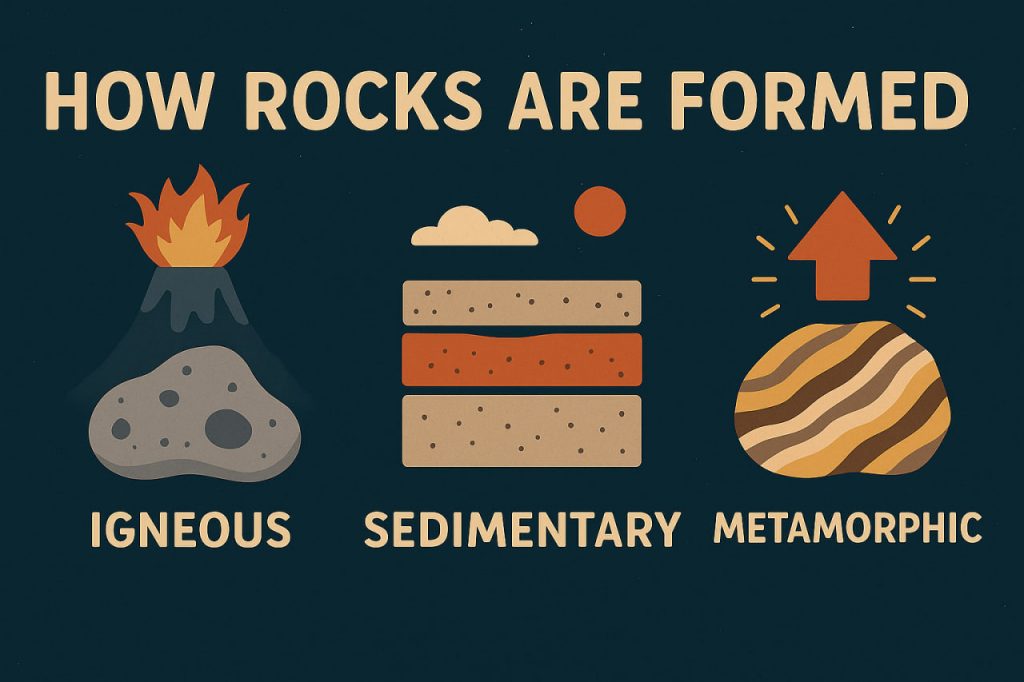Rocks are the fundamental building blocks of Earth’s crust and have been forming for billions of years through dynamic geological processes. Every rock tells a story—of volcanic eruptions, shifting continents, or deep-sea sedimentation. Understanding how rocks are formed helps geologists uncover Earth’s history, including past climates, environments, and tectonic activity.
There are three main types of rocks—igneous, sedimentary, and metamorphic—each formed through different processes in the rock cycle, a continuous transformation driven by pressure, temperature, and chemical changes.
Igneous Rocks: Born from Fire
Igneous rocks form from the cooling and solidification of magma or lava. These rocks are classified based on where the cooling occurs:
- Intrusive igneous rocks (like granite) form beneath the Earth’s surface when magma cools slowly, resulting in large crystals.
- Extrusive igneous rocks (like basalt) form at or near the surface, where lava cools quickly, producing fine-grained textures.
Igneous rocks are often associated with volcanoes, mid-ocean ridges, and tectonic plate boundaries, where magma rises from the mantle.
Sedimentary Rocks: Layers of History
Sedimentary rocks form from the accumulation, compaction, and cementation of sediments—tiny particles of rock, mineral, or organic matter. These sediments are transported by wind, water, or ice and deposited in layers over time.
Common sedimentary rocks include:
- Sandstone (from compacted sand)
- Limestone (from shells and marine organisms)
- Shale (from compacted clay)
Sedimentary rocks often contain fossils and are crucial for studying Earth’s biological and environmental history. They usually form in riverbeds, lakes, oceans, and deserts.
Metamorphic Rocks: Changed Under Pressure
Metamorphic rocks form when existing rocks are subjected to high pressure and temperature, altering their mineral composition and structure without melting them. This transformation—called metamorphism—occurs deep within the Earth, often during mountain-building events.
Examples include:
- Marble (from limestone)
- Schist (from shale)
- Gneiss (from granite)
Metamorphic rocks often show banding or foliation, caused by the reorientation of minerals under directional pressure.
Glossary
- Rock cycle – the continuous process of rock transformation between igneous, sedimentary, and metamorphic forms
- Magma – molten rock beneath Earth’s surface
- Foliation – alignment of minerals in metamorphic rocks
- Sediments – particles formed from weathered rock or organic material
- Metamorphism – alteration of rock structure due to pressure and temperature


